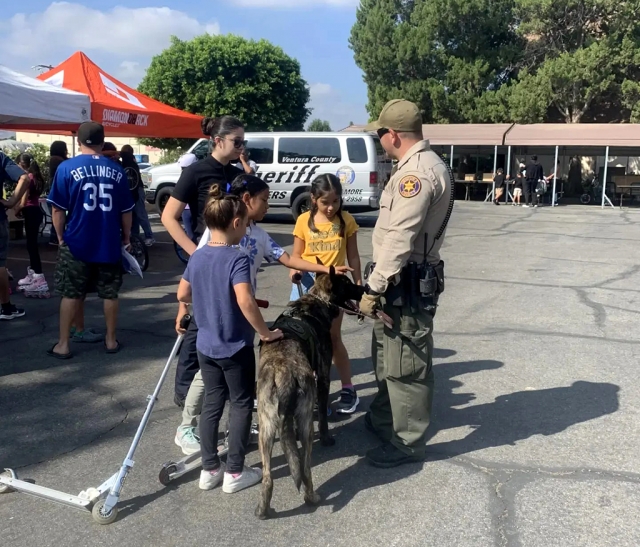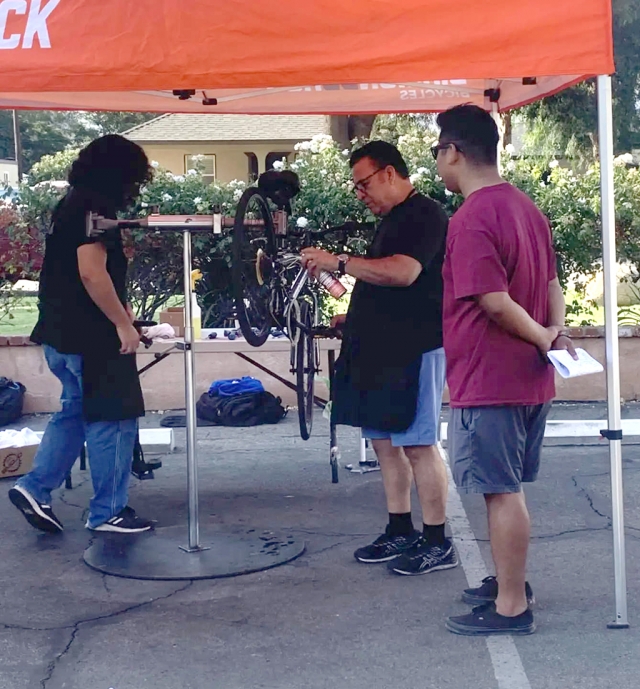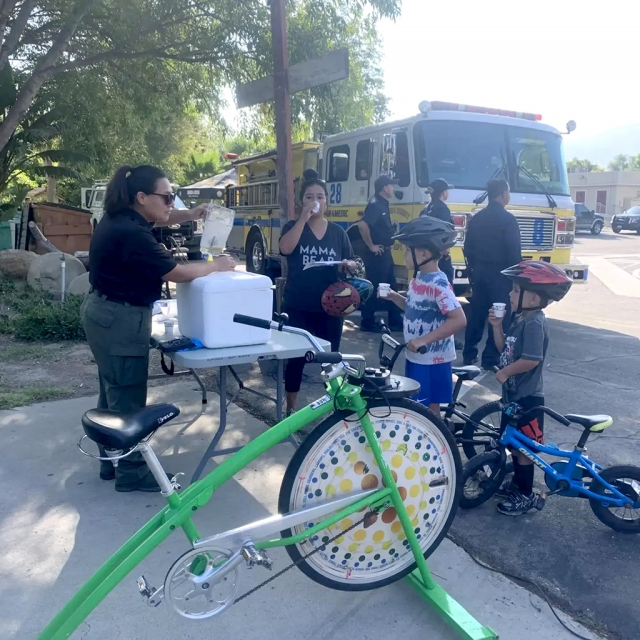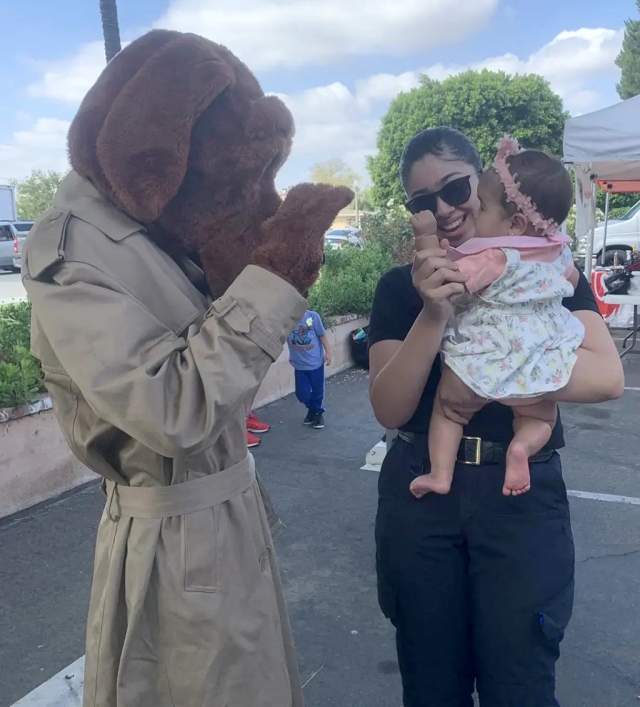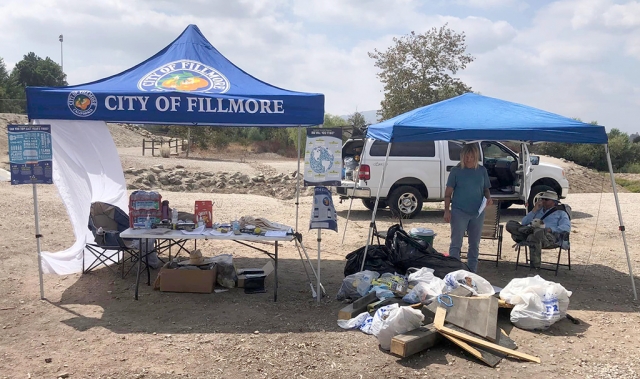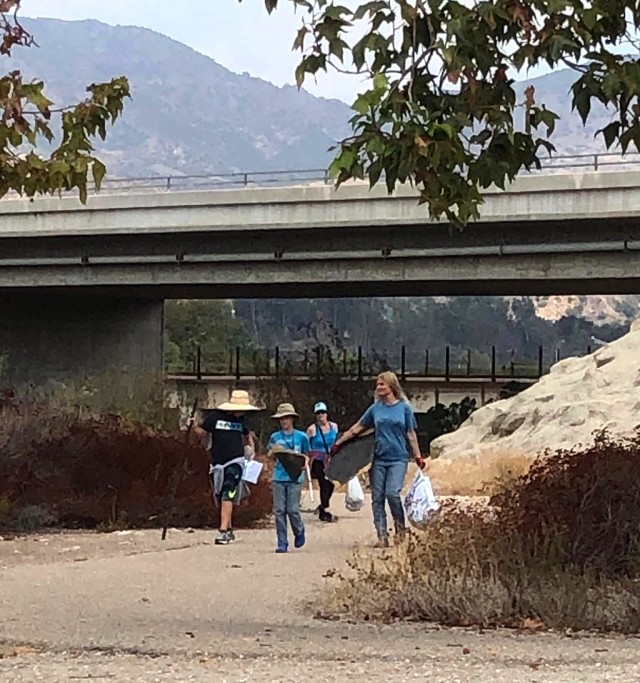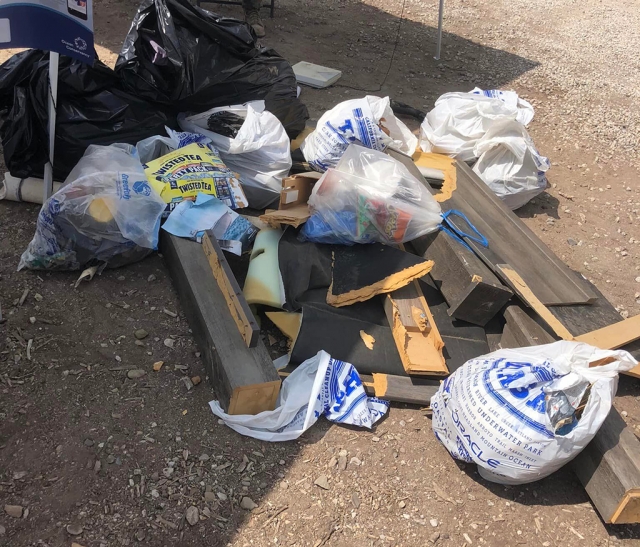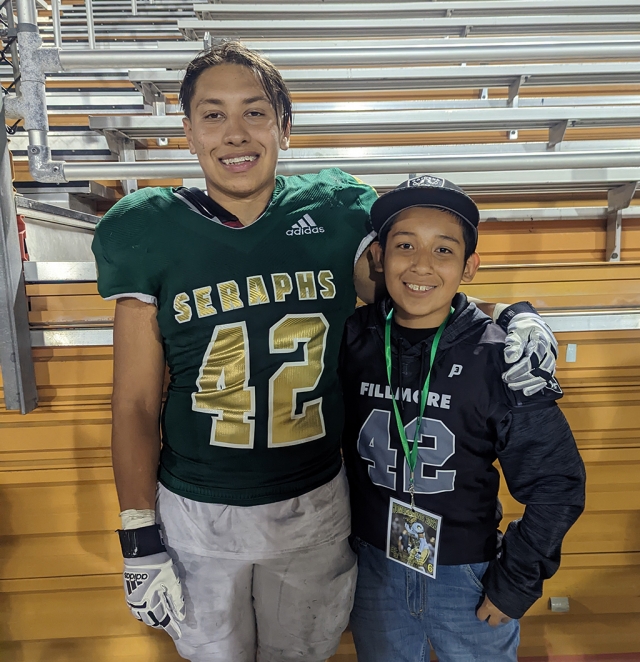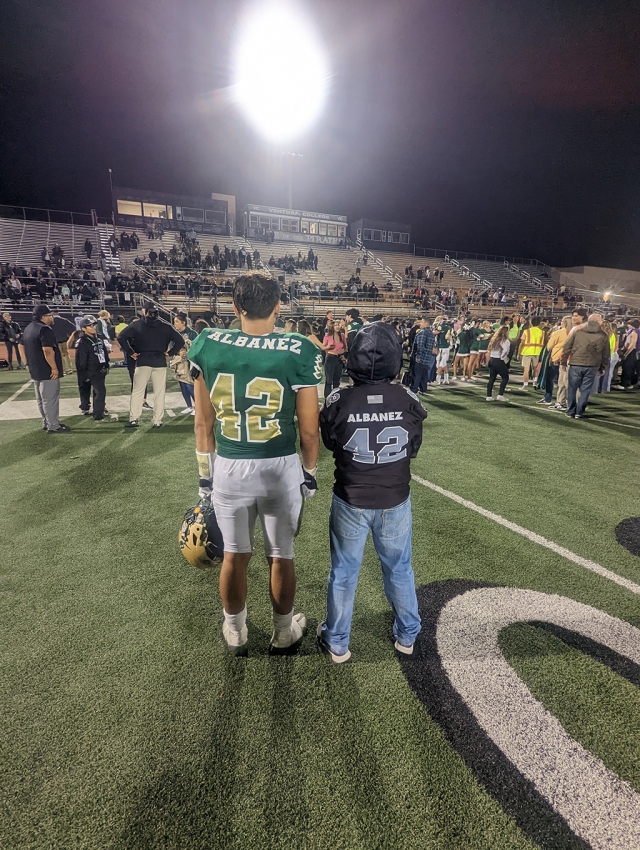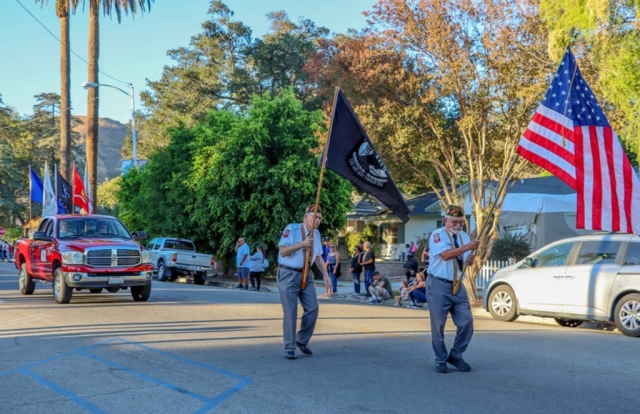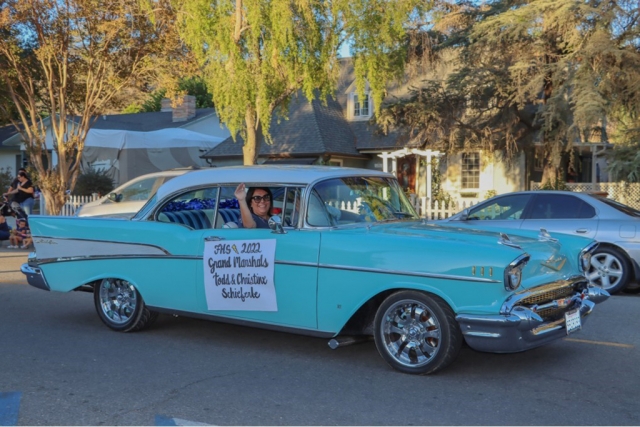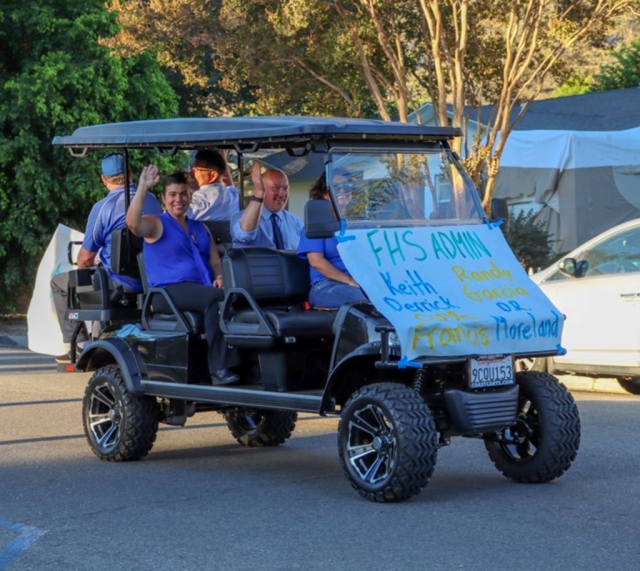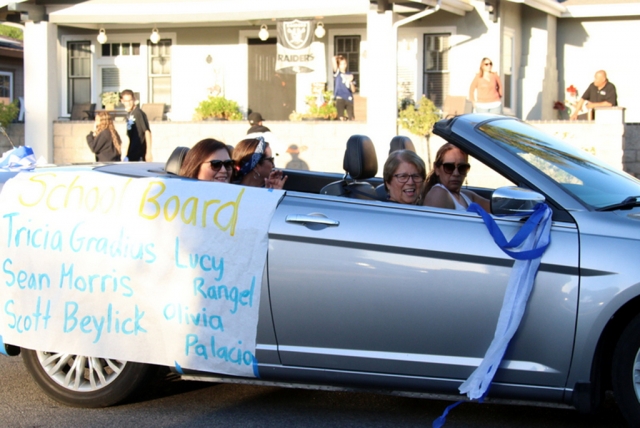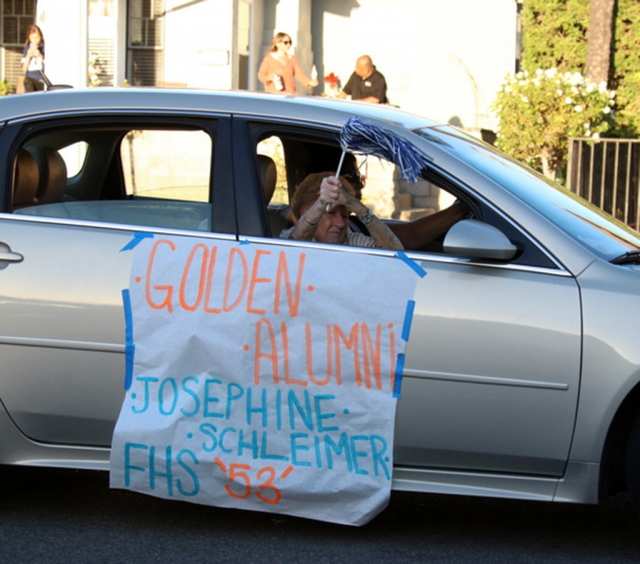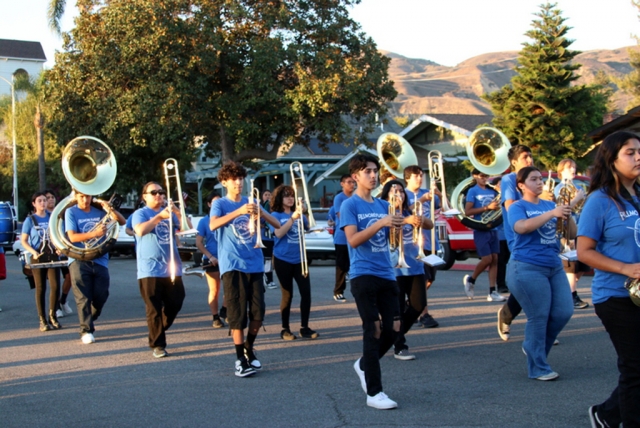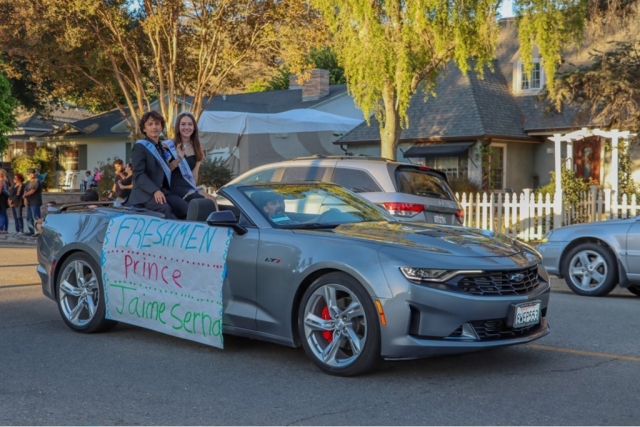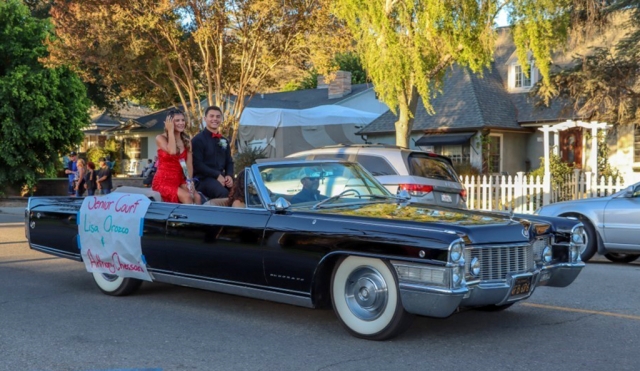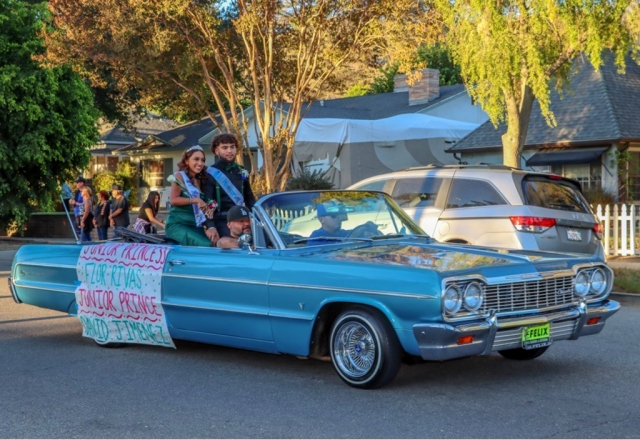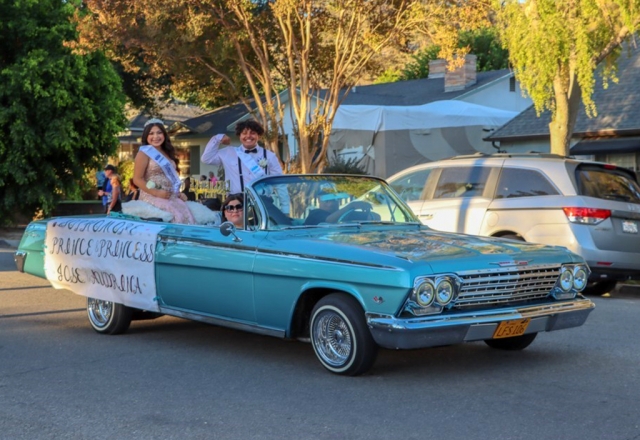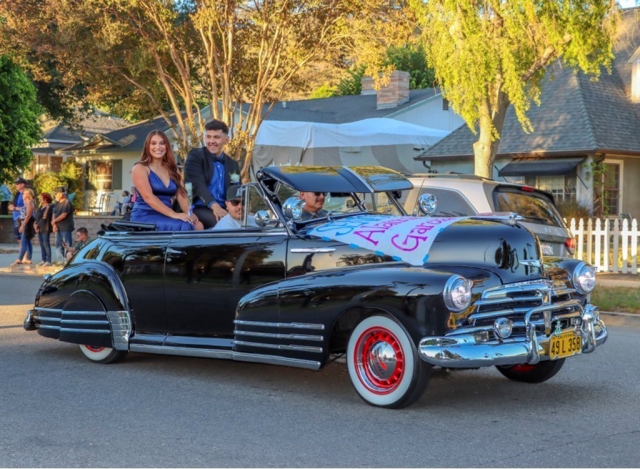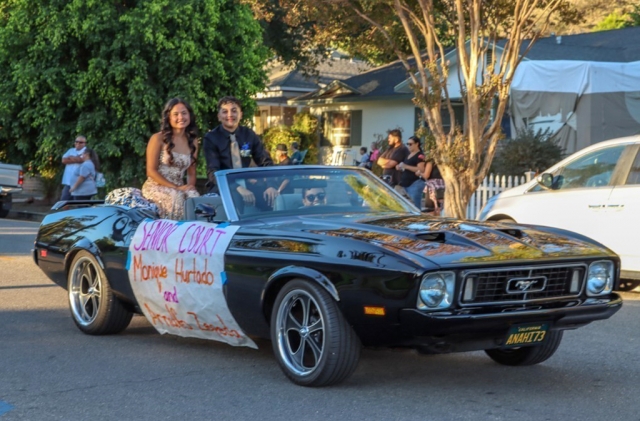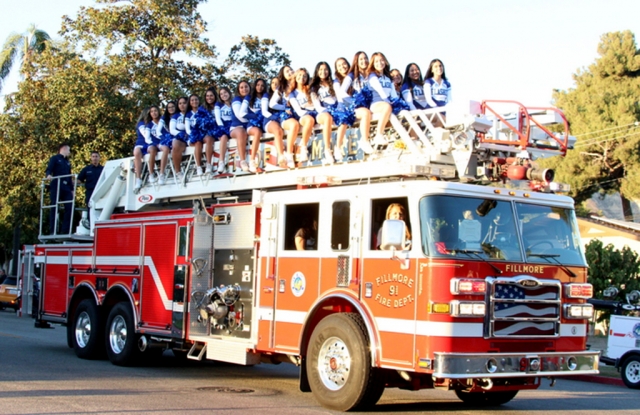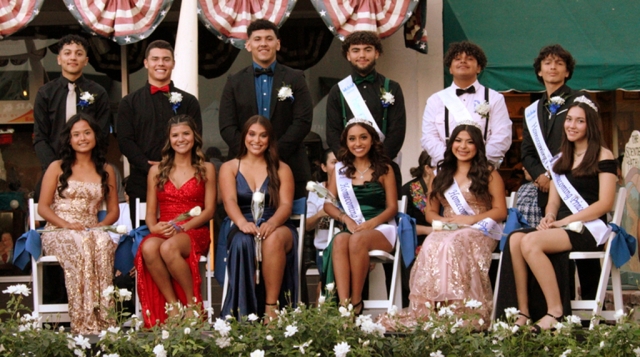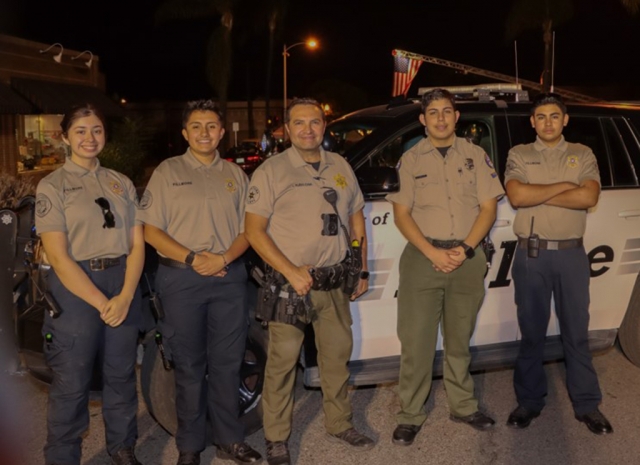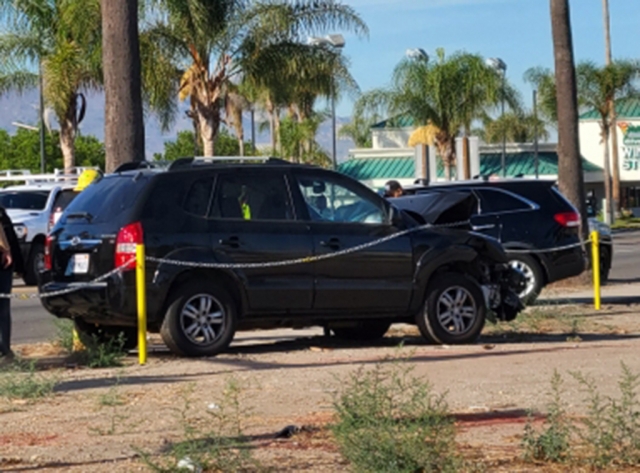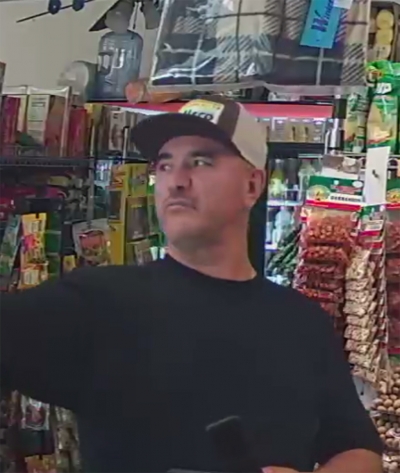|
By Gazette Staff Writers — Wednesday, October 5th, 2022
 On Saturday, September 17th from 9am to noon at San Salvador Church in Piru, Fillmore Citizens Patrol hosted the Annual Bike & Skateboard Safety Rodeo. Those who participated went through a safety course, and many received a free helmet while supplies lasted. Thank you to the community for making the Bicycle & Skateboard Safety Rodeo a huge success! A huge thank you to the Fillmore Citizen Patrol, special guests, and all volunteers who helped. Photos courtesy Piru Neighborhood Council, Inc. Facebook page. Enlarge Photo |
|
By Gazette Staff Writers — Wednesday, October 5th, 2022
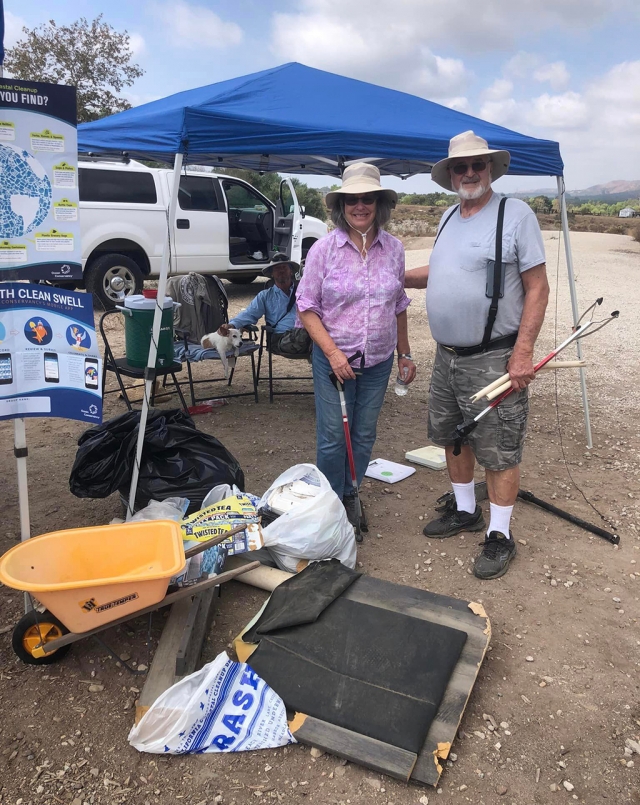 Thank you so much for all those in the community who came out for the Annual Coastal Clean up on September 17th. Special shout out to @friendsofsantaclarariver, Soroptimist International of Fillmore, Fillmore Lions Club, and @fillmorecivicpride. Courtesy City of Fillmore Facebook page. Enlarge Photo |
|
By Gazette Staff Writers — Wednesday, October 5th, 2022
 The Fillmore Raiders Juniors Silver Team was invited to St. Bonaventure's Homecoming football game, as they are 5-0! It was a special moment for Mikhale Albanez #42 as he joined his cousin Anthony Albanez #42 who is a senior at St. Bonaventure on the field. Albanez's finishing tackle after an initial stand-up hit on a two-point conversion attempt with 15-seconds remaining enabled St. Bonaventure to kick off defense of its Marmonte League title by defeating Bishop Diego, 21-20 on Homecoming night Friday, September 30th at Ventura College. Enlarge Photo |
Now Hiring: Deputy City Clerk
The City of Fillmore is seeking a detail-oriented and highly organized professional to join our City Clerk’s Office as Deputy City Clerk. This key role supports City Council operations, maintains official records, ensures legal compliance, and helps uphold transparency in local government. If you’re passionate about public service, governance, and supporting elected officials, we encourage you to apply. Learn more and apply at www.fillmoreca.gov.
|
By Gazette Staff Writers — Thursday, September 29th, 2022
 On Thursday, September 22nd at 6pm, Second Street to Central Avenue was blocked off for the Fillmore High School 2022 Homecoming Parade. As per tradition the Fillmore VFW Post 9637 lead the way and the Fillmore Flashes Cheerleaders ended the parade riding on top of Fillmore Fire Engine 91. This year’s Grand Marshals were Todd and Christine Schieferle. Also in the parade were the new FUSD school principals, special guest FHS Alumni, FHS Homecoming Court, Fillmore Youth Raiders Football & Cheer, Fillmore’s Love 2 Dance Studio 1, FHS Marching Band and the float’s students spent the week creating. Photos by Angel Esquivel-AE News & Crystal Gurrola. Enlarge Photo |
|
By Gazette Staff Writers — Thursday, September 29th, 2022
7-A PUBLIC HEARING: CONSIDER WHETHER TO ADOPT THE DRAFT UPDATED NORTH FILLMORE SPECIFIC PLAN AMENDMENT, NEXUS STUDY FOR IMPACT FEES, AND ENVIRONMENTAL ADDENDUM. Staff recommends that the City Council receive a presentation on the NFSP Amendment and Environmental Addendum, ask its questions, take public comment, consider the Ordinance and Resolution on the Addendum, and continue the public hearing to October 11, 2022, to consider the Nexus Study. 7-B REQUEST. 461 Central, LLC (Alex Glasscock), Owner, is requesting that the City Council approve an Amendment to the Property Remediation Agreement (Attachment 1) for the property located at 461 Central Avenue (“Property”). The requested amendment to the Agreement would allow the Owner until April 20, 2023, to complete installation of the fire alarm system and to satisfy all of the Conditions of Approval. Currently, under the Agreement and several time extensions previously granted, these tasks must be completed by September 30, 2022. 7-C REQUEST. The City Council is being requested to adopt an Amendment to Employee Handbook and updated Personnel Rules to be in compliance with current laws, regulations and personnel procedures. The Amendment to Employee Handbook incorporates previous authorized amendments. 7-D REQUEST Staff is requesting City Council authorization to exercise the City’s option to extend the auditor contract for two years so that annual audit for FY 2021-22 can be scheduled as soon as possible. 7-E REQUEST. Staff is requesting that the City Council authorize staff to invest cash in U.S. Treasury notes to take the opportunity to lock in interest rates that are earning close to 4.0%. The City has approximately $35 million of liquid cash, $26 million in California Local Agency Investment Funds and $5.4 million in Certificates of Deposit held in trust by MBS Securities. |
|
By Gazette Staff Writers — Thursday, September 29th, 2022
 On Monday, September 26th at 9am, a crash occurred at Central Avenue and Ventura Street with both vehicles ending up on the sidewalk. Both Fillmore Police and Fire Department responded quickly. At least one person was taken by AMR Paramedics to a local hospital. Cause of the crash is under investigation. Enlarge Photo |
|
By Gazette Staff Writers — Thursday, September 29th, 2022
Remains on as a Director
Michael Mobley, a VC Resource Conservation District board director, resigned from two officer roles Wednesday morning, September 21, 2022, nine months after pleading guilty to grand theft in December 2021 for stealing nearly $50,000 from clients over a 7-year range. Bill Morris, of Fillmore, was chosen as vice president, and Kevin Cannon, of Santa Rosa Valley, was chosen as treasurer to replace Mobley. Mobley, 66, of Oxnard, did not resign from his seat as director, and continues to serve on the agency boards of Mound Basin Groundwater Sustainability and the United Water Conservation District. Mobley returned $49,000 in victim restitution prior to pleading guilty in exchange for reducing the charge from a felony to a misdemeanor in a plea agreement. He was also ordered to complete 60 hours community service. BACKGROUND: Over the next several weeks, investigators learned that the ranch owners hired a property management firm that specialized in agricultural land management, identified as Progressive Land Management to manage and service an irrigation water well for the ranchers. The ranch owners initially contracted with Progressive Land Management in mid-2014. Investigators determined that over the course of several years, the owner of Progressive Land Management, identified as Michael Mobley, 66, of Oxnard, stole tens of thousands of dollars from the ranch owners and falsified bank documents in order to conceal the thefts. On the morning of May 20th, 2021, detectives from the Moorpark Station contacted Mobley as he was leaving his home in Oxnard and arrested him for the thefts, a felony. Detectives then returned to Mobley’s home and served a search warrant and seized additional evidence related to the thefts. Simultaneously, detectives from the Thousand Oaks Special Enforcement Unit, working in conjunction with Moorpark Detectives, served a search warrant at the offices of Progressive Land Management in the city of Santa Paula, where additional evidence was located and seized. Detectives eventually determined that Mobley embezzled nearly $50,000.00 from the Winchester Well Water Group. Mobley was booked at the Ventura County Main Jail on the charge of 487(a) PC / Grand Theft with bail set at $10,000.00. He had no prior criminal record. |
 The Buckhorn Ranch had been part of the Rancho Sespe land grant claimed by Thomas W. More. According to Hugh, “T. W. More. Photos Courtesy Fillmore Historical Museum. Enlarge Photo By Gazette Staff Writers — Wednesday, September 28th, 2022
Courtesy Fillmore Historical Museum Benjamin Warring was born March 9, 1831, in Tioga County, New York. In 1851 he traveled to California via the Isthmus of Panama, settling in San Jose where he had family. For a time, he was engaged in the lumber business. In 1854 he married Missouri Dorcas Easley. Missouri arrived in San Jose, from Missouri, with her family around the same time as Benjamin. In 1869 the Warring family, which now included Benjamin and Missouri as well as their three children, Isaac, Hugh, and Emmaline, and Missouri’s father and brother, moved from San Jose to Ventura County. The trip took three weeks for the party to reach Ari Hopper’s ranch. Mrs. Warring’s older sister, Susannah, was married to Ari Hopper for whom Hopper Canyon between Fillmore and Piru is named. In 1930, Hugh Warring told the story of how the family came to own Buckhorn this way, “My father put a shack up on the present Buckhorn Ranch. A man named Hitchcock had a possessory claim to the 160 acres my father wanted to buy. Hitchcock looked at the six-shooter my father wore and said he would trade the land for it. My father homesteaded the ranch as soon as it was open to entry.” The area known as Buckhorn Ranch had been part of the Rancho Sespe land grant claimed by Thomas W. More. According to Hugh, “T. W. More and my father were fighting over this property until More was murdered (1877). The decision of the court was handed down during the trial of his murderers. The grant was fraudulent and whether More committed the fraud or not we do not know.” There was an abundance of game in the area. It was not unusual to see bear prints around the area and Ari Hopper was known to have been a great bear hunter. Unfortunately, he died from an accidental gunshot wound while out hunting in 1898. It is said that Buckhorn Ranch earned its name because of the number of deer antlers which were displayed on the gate. The first crops they grew on the ranch were hay and grain which were sold to the stagecoach companies. In 1887 the ranch was planted with apricots. The first citrus was planted in 1891 or 1892 and they began to bear fruit in 1896. What really paid the bills in the early days was the ranch’s relationship with the stage company. Not only did they sell hay to them, but the ranch became one of the regular stagecoach stops. In 1887 the Warrings got a new neighbor. David C. Cook from Chicago was a successful publisher of religious tracts and books. He came to California to recover his health as many wealthy people did during that period. Cook purchased the Rancho Temescal land grant from the Del Valle family of Rancho Camulos. Cook was establishing a “Second Garden of Eden” in the Santa Clara Valley. He laid out the town of Piru. When the Southern Pacific Railroad declined to put a depot in Piru since it already had one at Rancho Camulos, Cook built and staffed his own depot in Piru. He built a school, church and a large home known as the Cook Mansion. By 1890, he had recovered his health and returned to Chicago. The Mansion and other property were first sold to the Piru Oil and Land Company. In 1907 W. A. Ramsay of Colorado purchased the Mansion for $65,000. The Santa Barbara Morning Press of October 20, 1907 reported that this was the same W. A. Ramsay who was promoting a “Ventura – Nordhoff (Ojai) – Matilija electric road.” The electric road would have been a trolley line between these points. In 1912 Hugh Warring purchased the Mansion from Ramsey and the family owned it until 1968 when it was purchased by the Scott Newhalls. In 1881 Hugh Warring had married Alice Conaway. Daughter of Joshua Conaway who was one of the first Ventura County Supervisors and County Assessor. Hugh and Alice would have four sons: Edwin, Floyd, Alfred and Lester. Alice died in 1896 with the official cause listed as “edema of the lungs.” Hugh remarried in 1903 to Ora Comfort, whose family had lived in the Buckhorn area since 1878. Ora had two sons from a prior marriage and she and Hugh had two sons, Benjamin and Chester Hugh Warring was involved in many enterprises such as the Hugh Warring Domestic Water System which provided water to the Piru community. He served one term as a Ventura County Commissioner. Running as an independent, he defeated both the Democratic and Republican candidates. Hugh built Piru’s first school on his property in 1882. It burned down and a new one was built in its place. That structure is reported as having burned before 1913 and the third structure was built just west of its location. Benjamin Warring served as the first director on the board of the Buckhorn School District, with Hugh serving in that capacity next. His sons, some of his grandsons, his brother Walter, and his only son, as well as Ora Warring’s father, H. B. Comfort, all served as trustees on the board for the Buckhorn School District. In 1916 it got a name change from Piru School to Buckhorn School. In 1921, it was enlarged to a two-room building. It was closed in the 1960s and the building was converted to a private residence. In 1927 along with W. H. Price, Frank Erskine, J. M. Horton, Charles Padelford and others, Hugh Warring established Ramona Building and Loan. The company was to extend loans for the building of homes and businesses in the Fillmore and Piru areas specifically. Hugh Warring was its first president. Ramona Building and Loan didn’t survive the effects of the great depression, which saw to its close in 1932. Hugh’s son, Floyd, opened the Ramona Savings and Loan with a group of investors, in conjunction with his father’s building and loan. It made it through that era, staying open to serve the Fillmore/Piru communities until the mid-1980s when it was purchased by an Orange County concern. Warring also was a major benefactor for his community donating the land for Piru’s Warring Park in 1937, as well as a pipe organ to the “Piru Community Church.” It was dedicated on June 2, 1935, with David C. Cook’s granddaughter in attendance. The organist for the day was Mrs. Kathryn Kelley Van Duyen of Pasadena and the Buckhorn Rhythm band also performed. Although David C. Cook founded Piru, it can be argued that Hugh Warring did more to shape the community. Hugh Warring passed away in October on 1939. His wife, Ora, lived with their son Chester until her death in 1954. |
|
By Ventura County Sheriff Department — Wednesday, September 21st, 2022
On September 5, 2022, at about 12:00 PM, an unknown man entered the La Hacienda Market located at 365 Main Street. The man cashed a check that was later discovered to be fraudulent. The man did not provide identification however, he stated that his nickname is “Guero” or “Jalisquillo.” The suspect is described as Hispanic, approximately 30-40 years old, about 6’0” tall and 210 pounds. The suspect was wearing a black T-shirt, blue jeans, and a trucker style hat that had the word “Jalisco” on the front. Surveillance photographs of the suspect are attached. Anyone with information pertaining to the identity of the suspect, this crime and/or similar one’s are urged to contact the Fillmore Police Station at (805) 524-2233 or the below listed detective. The reporting party may remain anonymous. The Ventura County Sheriff’s Office would like to remind all business owners that cash personal or business checks to verify identification prior to cashing a check and to scrutinize the authenticity of the check. Businesses offering check cashing services should also obtain a fingerprint from the customers cashing checks. Ventura County Crime Stoppers will pay up to $1,000 reward for information, which leads to the arrest and criminal complaint against the person(s) responsible for this crime. The caller may remain anonymous. The call is not recorded. Call Crime Stoppers at 800-222-TIPS (8477). Nature of Incident: Forgery / Request for Public Assistance |
|
By Gazette Staff Writers — Wednesday, September 21st, 2022
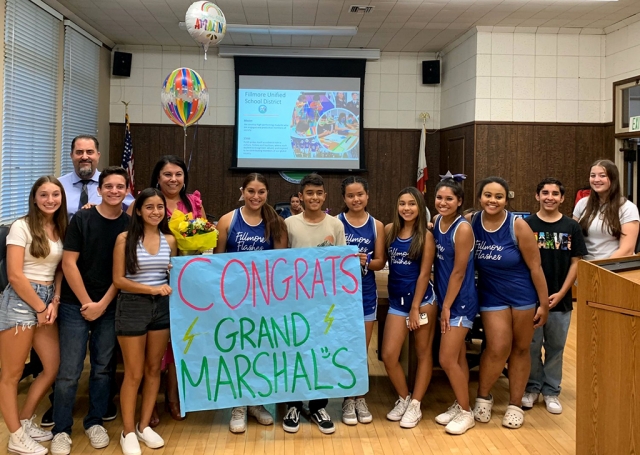 Congratulations to The Schieferles for being selected as the 2022 Homecoming Parade Grand Marshals! Mark your calendar now so you don’t miss the parade and all the fun activities happening in downtown Fillmore celebrating Blue & White night this Thursday, September 22nd, 2022. Blue & White night starts at 5pm. Parade starts at 6pm. See you there! Courtesy FUSD Blog. Enlarge Photo |

